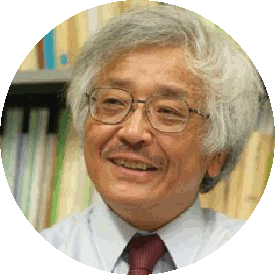earth
Making Full Use of Biodiversity
Conserve, Utilize, and Share Among the Community
Kanazawa University’s Kakuma Campus is endowed with a “Satoyama Zone” covered by a rich forest of oak trees inhabited by Japanese serows and raccoon dogs. This zone is an ideal environment for satoyama related activities such as nature observation, research and education. The university makes this area publicly available to community members studying wise and sustainable land use. For example, the Kakuma Satoyama Zone has been utilized by “Kakuma Satoyama Mates,” a volunteer group engaged in the promotion of various environmental conservation activities such as the reconstruction of terraced rice paddies, maintenance of bamboo forests, and the operation of family agricultural schools.
Kanazawa University collaborates with residents of Noto Peninsula in monitoring biodiversity for the maintenance of its satoyama and satoumi environments. For instance, we organize observation activities with local children to watch the migration of chestnut tiger butterflies. In order to support such activities, we have established the Noto Branch of Kanazawa University as our base research and exchange facility. The city of Suzu has provided us with a previously shut-down elementary school building free of charge for institutional use. In addition, local residents formed an NPO to aid further in the implementation of various Nature School related initiatives.
earth
Paving the Way for a Sustainable Society
Developing the Next Generation of Leaders Towards the Utilization of satoyama satoumi Biodiversity
Special Coordination Funds for Promoting Science and Technology, Ministry of Education, Culture, Sports, Science & Technology (MEXT)
Human well-being is contingent upon our relationship with the natural world. In other words, we need to develop a society wherein humans and organisms live in harmony through the wise use of satoyama and satoumi. This program enrolls young professionals up to 45 years of age with the aim of preparing these individuals to start up agriculture, forestry, fishery and related businesses within the Noto area. Our program’s goal is to train a total of sixty “meisters” over the course of five years. Several previous graduates of the Satoyama Meister Program have already become forerunners in the promotion of environmentally-friendly agriculture.
Human well-being is contingent upon our relationship with the natural world. In other words, we need to develop a society wherein humans and organisms live in harmony through the wise use of satoyama and satoumi. This program enrolls young professionals up to 45 years of age with the aim of preparing these individuals to start up agriculture, forestry, fishery and related businesses within the Noto area. Our program’s goal is to train a total of sixty “meisters” over the course of five years. Several previous graduates of the Satoyama Meister Program have already become forerunners in the promotion of environmentally-friendly agriculture.
The Nippon Foundation
“Ikimono” is a comprehensive term applied to all “living things.” This program aims to train five “meisters” a year to become proponents communicating the importance of human-nature symbiotic relationships to future generations. Teachers and citizens develop skills in teaching children about satoyama satoumi and biodiversity. Farmers, fishers, foresters and eco-tour guides will learn how to conserve and utilize biodiversity in their respective fields.
“Ikimono” is a comprehensive term applied to all “living things.” This program aims to train five “meisters” a year to become proponents communicating the importance of human-nature symbiotic relationships to future generations. Teachers and citizens develop skills in teaching children about satoyama satoumi and biodiversity. Farmers, fishers, foresters and eco-tour guides will learn how to conserve and utilize biodiversity in their respective fields.
earth
earth
Creating Future Potentialities
The Generation of New Values through Human Exchange
Mitsui & Co., Ltd. Environment Fund
Human exchange creates new possibilities. Urban-rural exchange, in particular, is crucial to the revitalization of the Noto area. This program encourages students and youth from urban areas to engage in various research, educational, and satoyama/satoumi-related conservation activities with residents of the Noto. Our aim is to bring one thousand participants through this exchange program over the course of three years, with the hope of creating new possibilities for enrichment of the Noto area.
Human exchange creates new possibilities. Urban-rural exchange, in particular, is crucial to the revitalization of the Noto area. This program encourages students and youth from urban areas to engage in various research, educational, and satoyama/satoumi-related conservation activities with residents of the Noto. Our aim is to bring one thousand participants through this exchange program over the course of three years, with the hope of creating new possibilities for enrichment of the Noto area.
Kakuma Satoyama Headquarters is an organization of Kanazawa University. In order to promote wise use of our Kakuma Campus “Satoyama Zone” (75ha) by various groups/individuals, we ask local governmental bodies, industries, and civil society organizations to form a “Satoyama Support Group” to support our ground-breaking research and educational activities. We nurture future possibilities for satoyama from the Kanazawa University Kakuma Campus “Satoyama Zone”.
This is an organization which coordinates local cooperation for our research and educational activities. The Noto Operating Unit uses various means to relay the results of its studies back to community members with the hope of making such research applicative to regional revitalization efforts.

